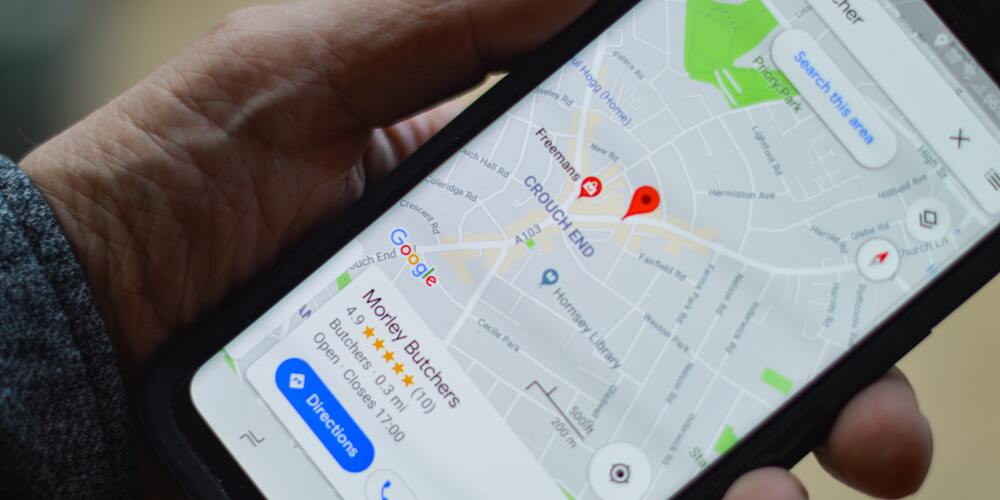In the world of digital marketing, many people want to keep their eyes on the big picture. That is the entire internet. It’s true that digital marketing tactics can help you reach a larger audience by leveraging things like email campaigns, social media and content marketing to boost your brand’s reach, but local businesses need a more focused approach.
According to our Marketing Manager Ashlee Rolkowski, any brand with a physical location or that serves a specific geographic area can benefit from local search engine optimization (SEO). It helps you capture potential customers in your local area so you know you’re marketing to an audience that can actually purchase from you.
In this blog, Ashlee walks us through a few key benefits of local SEO and ways to leverage them in your business.
Key Benefits of a Local SEO Strategy
“The purpose of an SEO strategy is to increase your brand’s online visibility and draw more of your target audience to your site,” Ashlee explains. “A local SEO strategy shares this goal, but with the added caveat that those customers need to be in a relatively small geographic area, like your town or city.”
This is important for location-specific brands because it gets more local eyes on your business and the services you offer. For example, if you’re a licensed counselor in Raleigh, North Carolina, you need local customers who can come to your office. Even if you choose to do telehealth appointments, you’d still need clients to live in the state where you’re licensed.
Aside from operating restrictions like in that, local SEO can be especially effective when you’re trying to get an edge on local competitors.
“There might be five other businesses in your area who are all appearing before you in local search results and Google Maps listings,” Ashlee says. “But with a solid local SEO strategy, you can start climbing up that results list to be the first business people see when they search in your area.”
So what tactics can you use to start seeing some of these benefits? Ashlee recommends the following four.
Be Present in Directory and Google My Business Listings
Directory listings are places like Google, Yelp or Yellow Pages where your business is listed online along with key information about your services. “The more directories you’re in, the more chances someone has of seeing your business pop up when they search for something related to your service or product,” Ashlee notes.
Because most Google searches are to find businesses that can solve the user’s problem, that means the search engine holds the “proverbial keys” to your local visibility.
“Google cares a lot about all of your directory listings being consistent and accurate,” Ashlee says. “If one listing shows Lone Fir instead of Lone Fir Creative, that’s a mark against you in Google’s book.” She adds that the same goes for information such as your hours of operation, website link, phone number, address and whatever else is included on your business listing.
The problem with maintaining multiple directory listings is that not all of them make it easy to update information or hand off management to someone else on your team. Listing in multiple places over time can inevitably lead to inconsistencies, so Ashlee recommends using a service that lets you publish to multiple directories at once.
“That allows you to maintain consistency across all of the places you’re listed and create a central place to manage your listings,” she says. She recommends services like Yext, Synup and BrightLocal.
Google My Business
As one of the most prominent online business directories, Google My Business gets its own section in this blog. Most businesses with an online presence have a Google My Business listing, “and if you don’t, you need one,” Ashlee says. She notes that Google controls so much of what people see when they search that you’ll need to be part of its network to boost your chances of being found.
“You might even have a listing you didn’t know about,” Ashlee reminds business owners. “If that’s the case, you’ll need to claim your business profile through Google to start managing the information on it.”
Once you’ve set up your listing with all the appropriate information, you can start showing up in search results pages and Maps results along with your competitors.
“The better you can optimize your listing (and use the next three local SEO tactics), the better chance you have of appearing at the top of those results lists,” Ashlee says.
Reviews
Every business owner knows the importance of online reviews, but Ashlee notes that directory reviews, especially those from Google, are a critical part of any local SEO strategy. “They have a direct impact on where you show up in local search results,” she says.
With that in mind, it’s important to remember that collecting reviews is an active process. You need a repeatable strategy to request and collect reviews from your customers. For example, when a new customer has a positive experience, ask them to leave a review either in person or with a follow-up email (that ideally contains a link).
“Prompting this positive feedback is important because one day someone will inevitably get frustrated and write a bad review,” Ashlee says. She adds that insulating your business from this one negative review with positive ones helps show searchers that most people find success with you, despite one customer’s issue.
Perhaps the most critical element of compiling reviews is that each one is real, organic feedback from local customers. “If you start trying to buy or manufacture reviews, Google’s spidey sense will kick in and that’ll be a mark on your record,” Ashlee says. “And trust me. The last thing you want is a Google demerit.”
Optimize Your Website for Easy Mobile Use
More and more people are on their phones searching Google for solutions to their problems. Making your website mobile-friendly is a core tenet of any SEO strategy, but it can be especially helpful when your marketing strategy targets the local community.
“Local users are looking for specific information about your business,” Ashlee says. “Usually where to find you or how to contact you. So your website needs to be easy for a user to navigate on their phone to reduce friction in this early part of the buyer’s journey.”
Ashlee recommends putting yourself in the mind of your customer. Go to your website on your phone and see how easy it is to move between pages. Can you quickly find your contact information? Are your products and services easy to identify? If not, consider updating your site to be more mobile-friendly.
A couple of ways to do this include:
- Using a responsive layout that scales to the screen size of mobile devices like smartphones and tablets.
- Make sure your site’s load time is less than 3 seconds.
- Avoid pop-ups on mobile. (They often take up the entire screen on mobile and make it difficult to navigate the page.)
Develop a Localized Content Strategy
It’s tough to mention anything about search engine optimization without acknowledging content strategy. “Local people still want valuable content. They just want it to be specific to their area,” Ashlee notes. To create an effective local content strategy, Ashlee recommends using three tactics…
Local Specific Product Pages
These pages are nearly identical to regular product pages, except they introduce information and keywords that are specific to the city or town your business serves. Local specific pages can use a lot of the same content as your regular pages, but Ashlee advises you add some content unique to your area. She adds the city name should be in the page title, URL and throughout the copy.
Local “How-To’s”
Instead of writing a traditional “how-to” blog, Ashlee says you should make it specific to the challenges that might come up in your local area. For example, think of the topic “how to grow Emerald Green trees in Norwalk, Connecticut.” The snow and salt from the road likely present unique challenges for arborists and enthusiasts alike in that area. Your blog should focus on the unique pain points of people in your city.
Guide To the Area
Ashlee notes that writing a local guide to the area is especially effective if you’re in the local food or retail industry. You could write a guide to your favorite clothing boutiques or the best restaurants for clean eating in the area.
“It offers value to your audience and you can mention your own business in the article,” Ashlee says. “Plus it’s an opportunity to support other local businesses and build relationships with them.
Stand Out in Your City
A local SEO strategy can help you climb in local rankings and attract the right customers for your business, but building that traction requires some additional tactics to boost your visibility and brand awareness locally.
To learn more about general SEO strategies and how you can optimize your website, check out our blog about all things SEO!







